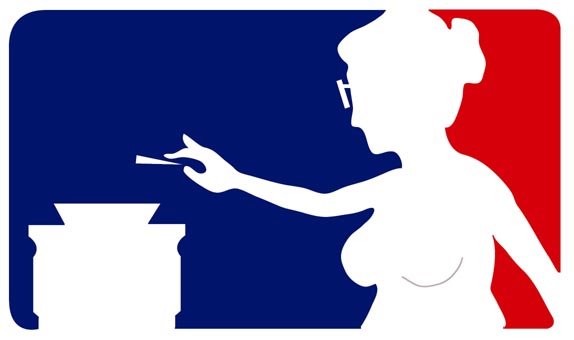For the majority of major league teams, this is the final week of their season. This means back to the planning board for the front offices as they decide whether to buy this off-season, sell, do both, or attempt to remain static moving forward. One thing is for sure: every team in the league – barring perhaps the Yankees – could use more star power. So how do you acquire stars?
Let’s start with the starting pitchers. Obviously “star” is a word with ambiguous meaning. For some it means a guy who will move tickets, sell jerseys, and land them a marquee spot in the highlights on nights he pitches. For others it means one of the best pitchers in the league whose performance should bring the attention and spotlight, but everyone knows that’s not always a guarantee.
For this set of exercises I’m choosing to define star as the latter. I’ve taken the top 30 starters as told by THT’s xFIP metric. Why xFIP? Because it normalizes home run rates and saves time in noting certain pitcher performances in ballparks like those Oakland and San Diego. From there I noted how each was acquired by their current team.
Anderson ends up concluding that signing an ace in free agency isn't the way to go, because few of the top-30 xFIP pitchers were obtained via free agency (11 pitchers acquired via trade, 13 in the draft, 3 as international FAs, and 3 as veteran FAs).
I decided to examine this same list of 30 pitchers in the context of LOWV, because like major league GMs, many LOWV GMs will be looking to pick up an ace this offseason -- witness the overheated Harden auction for evidence of that.
(Granted, it would be dumb to shell out for an ace without taking into account the park and defense he's dealing with, but at the same time players are known to change teams without warning, so ideally your ace will be a stud whether he's pitching in Metco or Yankee Stadium.)
So -- how did this crop of primo SPs end up with their current teams?
1. Javier Vazquez – 2007 auction
2. Tim Lincecum – free agent
3. Dan Haren – trade with Guapo (offseason)
4. Roy Halladay – trade with PMF (offseason)
5. Zack Greinke – free agent
6. Jon Lester – trade with LM (in-season)
7. Josh Johnson – free agent
8. Justin Verlander – free agent
9. Ricky Nolasco – trade with LM (in-season)
10. Adam Wainwright – free agent
11. Chris Carpenter – waiver auction
12. Felix Hernandez – 2007 auction
13. Josh Beckett – waiver auction
14. Joel Pineiro – free agent
15. Ubaldo Jimenez – free agent
16. Cole Hamels – free agent
17. Wandy Rodriguez – trade with ERdR (offseason)
18. Yovani Gallardo – waiver auction
19. Gavin Floyd – trade with unB (offseason)
20. Brett Anderson – trade with Guapo (in-season)
21. Jorge de la Rosa — free agent
22. Jason Hammel – *unsigned free agent*
23. CC Sabathia – 2006 draft
24. Ryan Dempster – free agent?
25. Roy Oswalt – 2006 draft
26. Aaron Harang – trade with VR (in-season)
27. Max Scherzer – JRL draft
28. Chad Billingsley – waiver auction
29. Joe Blanton – free agent
30. Clayton Kershaw – JRL draft
2006 DRAFT: 2 (Sabathia, Oswalt)
2007 AUCTION: 2 (Vazquez, Hernandez)
WAIVER AUCTIONS: 4 (Carpenter, Beckett, Gallardo, Billingsley)
TRADES (offseason): 4 (Haren, Halladay, W. Rodriguez, Floyd)
TRADES (in-season): 4 (Lester, Nolasco, Anderson, Harang)
FREE AGENTS: 10 (Lincecum, Grienke, Johnson, Verlander, Wainwright, Piniero?, Hamels?, de la Rosa, Dempster?, Blanton)
JUNIOR LEAGUE: 2 (Scherzer, Kershaw)
SHOPPING WITH FOOD STAMPS: 1 (Hammel)
These results are both quite interesting and mildly misleading.
The first thing that jumps out at you is that fully 1/3 of these pitchers were signed to minimum contracts as free agents, who at one point were available for anyone to snag. However, this number includes two sets of players: scrap-heap finds, like de la Rosa and Blanton, and rookie pitchers turned aces, like Lincecum, Verlander, Hamels and Grienke. My guess is that in the future, ace-provenance lists will show fewer FAs and more Junior League draftees (whether developed by their organization or traded for, a la Brett Anderson). Still, it seems as though in any given year, several top pitchers will go into the season with low expectations and little hype, ready to be snared by the watchful GM. Keep that in mind before you splurge on an SP.
Eight top pitchers came via trade, four in midseason (defined as occurring after the draft/auction) and four in the offseason. Ace pitchers shouldn't get too comfortable in any LOWV city, because they may be traded at any time. If you're looking for a sweet starter, it seems advisable to hit up LM or Guapo, who have shown a propensity for shipping those dudes out of town...
Only a few pitchers who demonstrated 2009 brilliance have been with their teams since the 2006/2007 inaugural draft and auction, respectively. It appears that ZERO SPs of serious 2009 distinction were acquired in the 2008 or 2009 auctions. Again, expect this trend to reverse itself as the pinch of the salary cap boots quality SPs into the marketplace (and 2009 auctionee Tommy Hanson rises to prominence).
Finally...Jason Hammel? Highly underrated!

